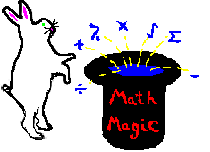

A. Combinations are often confused with permutations.
1. A combination can be thought of as a small group of a collection of objects.
2. In other words, if we had 4 people: A,B,C,D, one possible combination of 3 people could be ABC or ABD.
3. Combinations come in many different forms.
a. Some forms are obvious:
nCr or C(n,r)
b. Other forms are not so obvious and are written as word problems making them somewhat difficult to recognize:
Ex [1] How many 2-member committees can be formed from 6 people?
Ex [2] How many lines are determined by 4 points, no 3 of which are collinear?
Ex [3] How many triangles can be formed using 3 vertices of a regular hexagon?
1) One way to know if we are dealing with permutations or combinations, is to answer one question: Does the order matter?
2) If the answer is yes, then we will be using combinations, not permutations.
Ex [1] How many 2-member committees can be formed from 6 people?
a. We have 6 people: A, B, C, D, E, and F.
b. Can we have a committee of AB and BA and count this as 2 committees or is this just one? Since we are talking about the same people this just counts as 1, so the order does matter.
Ex [2] How many lines are determined by 4 points, no 3 of which are collinear?
a. We have 4 points: A, B, C, and D.
b. If we draw a line through segment AB and through segment BA, is this two different lines, or just 1? It is only one, so order does matter.
Ex [3] How many triangles can be formed using 3 vertices of a regular hexagon?
a. We have 6 points: A, B, C, D, E, and F.
b. If we create a triangle ABC, ACB, BAC, BCA, CAB, and CBA, are these considered different triangles or the same triangles? They are the same, so order does matter.
B. How to calculate combinations:
1. This method uses factorials.
2. There are ALWAYS fewer combinations than permutations.
3. C(n,r) = n!
(n-r)!*r!
Ex [1] 3C2 = __________.
3!/[(3-2)!*2!] = 3!/1!*2!
3!/1!*2! = 3*2*1/1*2*1 = 3.
The answer is 3.
Ex [2] How many triangles can be formed using 3 vertices of a regular octagon?
First, notice we need to calculate C(8,3) since an octagon has 8 vertices.
8!/(8-3)!*3! = 8*7*6*5*4*3*2*1/[5*4*3*2*1]*[3*2*1]
8*7*6*5*4*3*2*1/[5*4*3*2*1]*[3*2*1] = 8*7*6/6
8*7*6/6 = 8 * 7 = 56.
The answer is 56.
C. Notice as in Ex [2] part c, there will always be numbers that cancel each other out, making the problem much easier. It is too hard to calculate 8!, then divide by 5!*3!. You should learn to recognize how to do this to make the problem faster and easier.
D. One property of combinations is that C(n,r) = C(n,n-r). So sometimes we might encounter a problem that looks like:
Ex [3] 7C3 = 7Cn , n … 3, then n = __________.
a. For problems of this nature simple subtract 3 from 7.
b. The answer is 7-3 = 4.